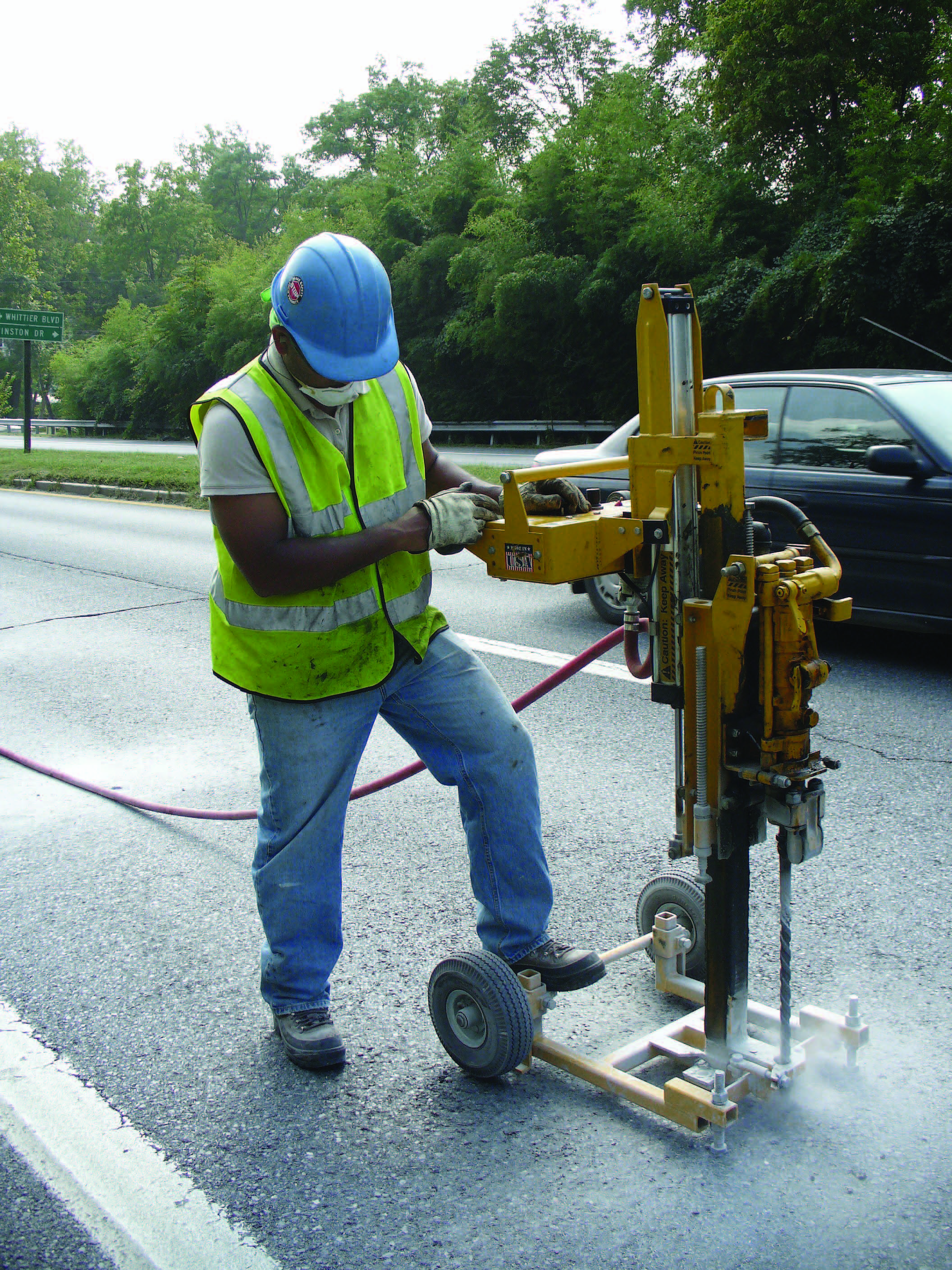March 2009 Vol. 236 No. 3
Features
Challenges of Pipeline Testing in Suburbia

Recently MATCOR, Inc. engineers and corrosion technicians conducted an External Corrosion Direct Assessment (ECDA) on a buried natural gas transmission pipeline with a cathodic protection system in a Maryland suburb of Washington, DC.
ECDA is a process through which an operator is able to assess the integrity of a non-piggable pipeline. This process integrates the knowledge of the physical characteristics and operating history of a pipeline with the results of diagnostic and direct measurements performed on the pipeline.
In this case, MATCOR conducted a month-long study on a section of pipeline approximately three miles long and located along a four-way divided boulevard, lined by homes, churches, and private schools. The pipeline itself was installed in 1951, when the area was less traveled, with much lower traffic volumes.
Today, this section of pipeline exists in a High Consequence Area (HCA). State and Department of Transportation regulations define HCA regions based upon population and community/ public venues, such as schools, churches, and densely populated residential areas. Buried utilities and auto and pedestrian traffic all pose challenges for technicians seeking to examine a pipeline 6.5 feet under the asphalt. Without proper preparation, physically reaching the pipeline is impossible.
In a suburban area the pipeline may run under several highly trafficked roadways and intersections. It is important to identify utilities in the initial planning stages. On this project, the Maryland one-call program, Miss Utility, was the first point of contact to identify other utilities running adjacent to, parallel to or intersecting the pipeline surveyed. Safety of the workers, interference with the community’s utilities, and accuracy of testing readings depend upon knowledge of existing utilities. Controlling and understanding traffic flow is critical to safety and the success of the project. High traffic areas are identified early in the project plan; working hours must be scheduled so as not to interfere with peak traffic periods and to ensure the correct safety procedures are in place during the testing period. This includes the number of personnel for traffic control and the placement of warning signs and signals. For this project, a local company specializing in traffic control was contracted to provide signage, vehicles, and personnel for the duration of the project.
To determine the necessary tools required to complete the ECDA, engineers must complete a pre-assessment of the pipeline. Based upon the data collected from maps, pipeline plans, historical data, and information gained from site walk throughs, engineers determine the best method for collecting the data, and technicians prepare the tools and gather the personnel necessary for testing.
Testing Process
Once on site, with a lead supply van, flagman, signage and a trailing safety truck complete with an eight foot LED caution diamond on its tail, MATCOR’s crew began the process of connecting to the pipeline. Test stations are installed at the beginning and end of each defined HCA region for ECDA purposes. Using the Pipeline Current Mapper (PCM), the pipeline was marked at appropriate intervals according to National Association of Corrosion Engineers (NACE) criteria for pipeline under asphalt; the techs then drilled through the asphalt until a proper electrolyte contact could be made for conducting indirect surveys. Holes drilled through the asphalt approximately every 10 feet allowed this access. (If you are counting, that’s nearly 1,550 holes!) The Pipeline Current Mapper not only locates the pipeline but measures attenuation along the pipeline to detect possible current loss, which may indicate possible coating deficiencies along the pipeline. Sub-meter Global Positioning Systems accurately pinpoint areas of concern along the pipeline being surveyed.
In this project, Pipeline Current Mapper (PCM), Direct Current Voltage Gradient (DCVG), and Close Interval Survey (CIS) were three applicable indirect assessment tools for collecting thorough data analysis on the cathodic protection (CP) of certain sections of the 20- and 24-inch transmission pipelines.
Engineers walked the 3.325 mile stretch, three miles of which was paved and fully traversed by auto and bus traffic, measuring the pipe-to-soil potentials along with any current gradient at each site. When the pipeline veered off the road’s path, engineers used the same methods in the grassy berm alongside the entrance ramp to Route 495, an eight lane superhighway ringing Washington, DC.
Later, when the drilling and then the measurements were complete, the walk started again, this time with technicians pouring sand in each of the 1,550 holes, tamping down an asphalt plug, and heating the plug with an acetylene blow torch to patch the holes. Invisible to the irritated motorists, the pipeline’s integrity was verified, ensuring the safety of the community and the uninterrupted flow of natural gas to the vicinity.
To properly conduct ECDA of pipelines, NACE International certified engineers and technicians are the pipeline owner’s best resource. NACE Certification requires hours of classroom and field experience and a rigorous testing program, all focusing on corrosion recognition and prevention. In the case of cathodic protection systems, required by federal DOT regulations on natural gas and oil pipelines, NACE certified corrosion engineers with specialized cathodic protection credentials will ensure adherence to code and safety of the testing process.





Comments